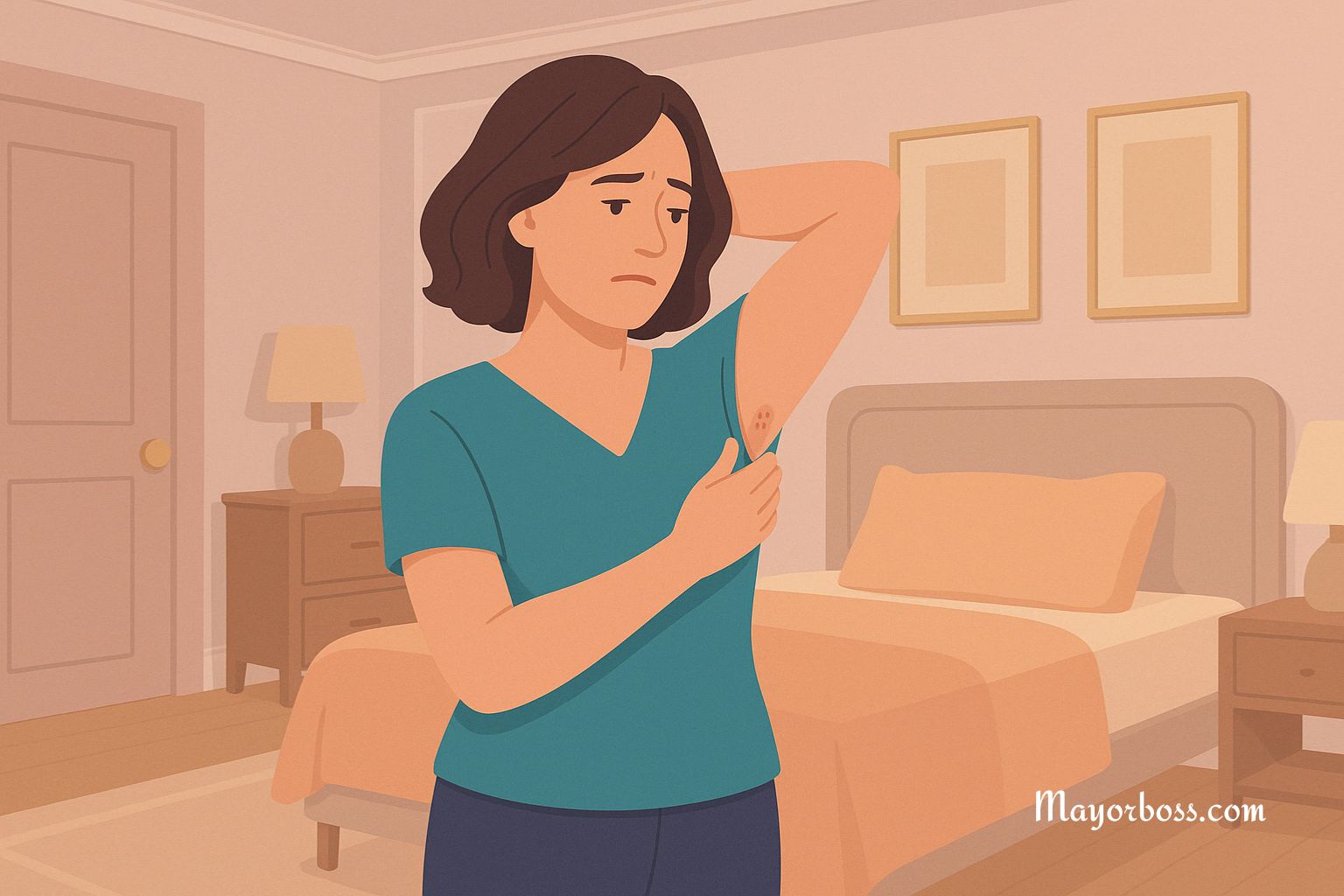What Is Hidradenitis Suppurativa? The Skin Condition That Causes Painful Bumps
Hidradenitis suppurativa (HS) is a long‑lasting skin disease that forms deep, painful bumps in spots where skin touches skin—such as armpits, groin, under the breasts, buttocks, and inner thighs. The bumps often leak fluid, heal very slowly, and can leave thick scars. HS is not contagious, yet it often causes embarrassment along with physical pain.1

How It Starts
Most people first notice HS after puberty. Hormone shifts, friction, and extra weight can start a chain reaction in hair‑bearing skin folds. Pores clog, inflammation builds, and tender nodules appear. At first, flares come and go. Without treatment, tunnels (sinus tracts) may form under the surface and connect several bumps.
What Causes It?
Doctors still study the exact trigger, but HS seems linked to:
- An overactive immune system. The body sends too many inflammatory signals to hair follicles.
- Genes. Around one‑third of patients have a close relative with HS.
- Hormones. Flares often worsen around menstrual periods or after starting certain birth‑control methods.
- Lifestyle factors. Extra weight and smoking increase friction and systemic inflammation.
HS is not the patient’s fault. Keeping that fact clear helps reduce stigma.
Typical Symptoms of Hidradenitis Suppurativa
- Painful, pea‑sized or larger lumps under the skin
- Tunnels that drain foul‑smelling fluid
- Blackhead‑like “double‑barrel” openings
- Thick, rope‑like scars after healing
- Flares that last weeks or months
Pain can feel sharp, throbbing, or burning. The emotional load—anxiety, shame, and sleep loss—can match or exceed the physical hurt.
How Doctors Diagnose It
Dermatologists rely on three clues:
- Typical lesions (deep nodules, abscesses, tunnels)
- Locations inside skin folds
- A chronic, relapsing pattern
No blood test confirms HS. A quick office visit is often enough, yet severe scarring may require ultrasound or MRI to map hidden tunnels.
Treatment Options
Daily Care
Gentle routines ease mild cases and support medical therapy:
- Use a pH‑balanced cleanser; avoid harsh scrubs.
- Wear loose, breathable clothing to limit friction.
- Apply warm compresses for 10 minutes to lessen pain.
- Keep weight in a healthy range; every kilogram lost reduces skin‑to‑skin contact.
- Quit smoking; nicotine drives inflammation.
Medical Treatment
When washes and lifestyle tweaks fall short, topical or oral medicines step in.
| Goal | Approach | Notes |
|---|---|---|
| Calm bacteria | Antibacterial washes, clindamycin lotion | Use twice each day on active areas |
| Reduce inflammation | Short oral antibiotic courses | Tetracyclines help both germs and swelling |
| Regulate hormones | Spironolactone or oral contraceptives (in women) | May cut flare frequency |
| Control severe disease | Biologics such as adalimumab or infliximab | Given through injection or infusion |
In November 2024, the FDA cleared bimekizumab (Bimzelx) for adults with moderate‑to‑severe HS. This monoclonal antibody blocks two cytokines—IL‑17A and IL‑17F—and showed strong results in phase 3 trials.2
Early research also hints that semaglutide, a weight‑loss injection, may ease HS flares in patients living with obesity, likely through weight reduction and lower systemic inflammation.3
Surgical Options
Dermatologic surgeons tackle scarred or tunnel‑filled zones through:
- Punch debridement. A small tool removes a single nodule.
- Limited excision. Cuts out one track or group of lesions.
- Wide excision. Removes an entire affected region; often followed with skin grafts.
Healing from surgery can take weeks, yet many patients report the greatest long‑term relief after excision.
Living With The Condition
Life with HS involves pain management, skin care, and mental health support. Tips that help many:
- Keep a flare diary, noting foods, stress, or menstrual timing that precede bumps.
- Join an HS support group—online or local—to swap coping strategies.
- Work with a dietitian to reach a balanced meal plan rich in fresh produce, lean protein, and whole grains.
- Ask a counselor or psychologist for cognitive‑behavioral therapy to handle anxiety and body‑image concerns.
When To Seek Help
Book a dermatology visit if:
- A new, tender lump lasts longer than two weeks.
- Draining fluid soaks clothing or disrupts sleep.
- Scars limit movement.
- Fever, spreading redness, or severe pain signals infection.
Early action limits tissue damage and reduces scarring risk.
Takeaway
Hidradenitis suppurativa is a chronic, under‑recognized skin disorder that causes painful bumps and draining tunnels inside skin folds. Genetics, hormones, and lifestyle factors shape its course, but the immune system drives the main damage. Modern care blends gentle skin routines, anti‑inflammatory medicines, new biologic drugs such as bimekizumab, and—when needed—surgery. Prompt treatment improves comfort, movement, and self‑confidence. If you notice stubborn lumps in friction zones, seek a dermatologist sooner rather than later. Together, you can create a care plan that keeps flares under control and helps you live with less pain.
